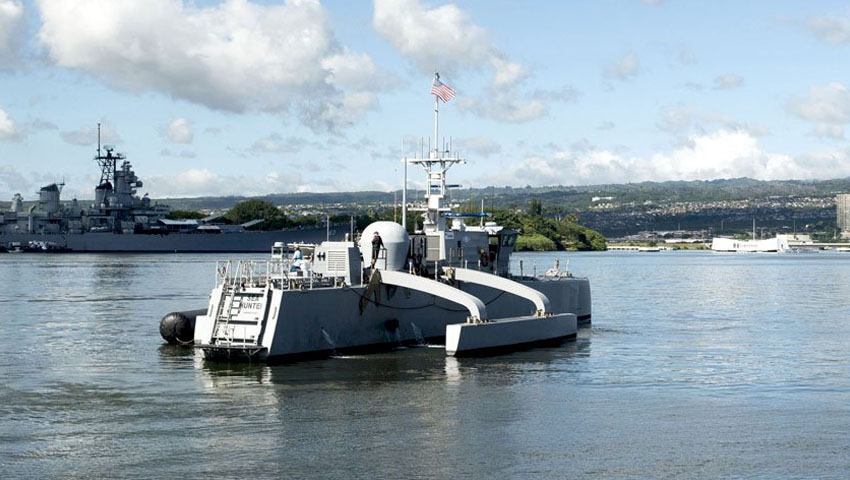China is “winning a bloodless battle” against the US, by leveraging its industrial prowess to ‘out build’ the US Navy, one analyst observes.
To continue reading the rest of this article, please log in.
Create free account to get unlimited news articles and more!
According to Marcus Hellyer, senior analyst for defence economics and capability at the Australian Strategic Policy Institute (ASPI), China is seeking to undermine US dominance in the Pacific by employing a double-pronged defence strategy, which hinges on the strength of its industrial capability.
Hellyer claims China has “broken” the United States’ willingness to operate near China’s cost in the event of a conflict with its neighbours through the use of an anti-access/area-denial strategy, and now hopes to further deter the US Navy by flaunting its conventional military might.
“The goal of these two battles is to win a bloodless war by making the cost to the US of intervening to counter an invasion of Taiwan too high,” he says.
“The Chinese strategy has put the US military in a bind, perhaps best illustrated by the US Navy’s struggles to develop an achievable force structure that can deter or defeat Chinese ambitions at an acceptable cost in treasure and, if necessary, blood.”
Hellyer questions whether the US Navy’s current production targets are enough to challenge the Chinese industrial juggernaut, even if they manage to meet them.
“US presidents, congresspeople and the navy have held a view that 355 ships was the magic number,” he writes.
“It’s debatable in world of growing Chinese power and evolving technology whether that was the right number, but the reality was the navy couldn’t have gotten there anyway.
“The cost of new ships has spiralled upwards, driven by the need for the sort of exquisitely complex, multirole vessels that can defeat the broadening range of threats posed by Chinese systems.”
Hellyer points to an analysis published by the Congressional Budget Office, which found that achieving the 355-vessel target would require a 60 per cent increase in spending on shipbuilding than the current average.
As a result, total ship numbers have fallen to as low as 280, with the decommissioning of old ships outpacing the launch of new ships.
The ASPI analyst continued: “Failed attempts to break out of the cycle, either by deploying advanced new technologies, in the case of the Zumwalt destroyer, or by building cheaper ships, in the case of the littoral combat ship, only exacerbated the problem by siphoning resources away from other programs in return for little or no useful capability.
“Moreover, they destroyed the navy’s credibility with Congress. The result was that the navy was losing capabilities such as vertical launch cells, a key metric of naval power, much faster than it could replace them.
“Other ways to break out of the cycle are being explored, but so far remain largely conceptual.”
Alternative paths
Hellyer references former secretary of defense Mark Esper’s Report to Congress on the annual long-range plan for construction of naval vessels, which explores a new production strategy and sets a target of 400 manned vessels teaming with around 140 unmanned ships.
Esper’s plan was to acquire more smaller combat and amphibious vessels, with the number of small surface combatants growing from 34 to 68 by the middle of the century, while large surface combatants would fall from 91 to 74.
“These aren’t small ships — the small surface combatant will be Fincantieri’s FREMM frigate, which was one of the contenders in Australia’s future-frigate competition,” Hellyer notes.
“They will be a lot more capable than the littoral combat ships but will have significantly fewer vertical-launch cells than the Ticonderoga Class cruisers that are retiring (and whose replacement is still undecided).”
Esper’s plan also calls for the provision of smaller amphibious ships used to operate within range of China’s A2/AD capabilities.
“Yet this is far from a wholesale move to mosaic warfare. For one, the plan is still committed to large numbers of extremely expensive manned platforms,” Hellyer argues.
“In addition to the 74 large surface combatants, it maintains 10 or 11 aircraft carriers, plus it increases the number of nuclear attack submarines — one key area where the US still has a substantial technological advantage over China — from 52 to 80.”
According to Hellyer, the plan’s biggest flaw is the failure to address the issue of affordability.
“The reduction in large surface combatants is nowhere near enough to offset the additions,” he says.
“The 2021 budget assigned US$20.3 billion to shipbuilding, growing to US$28.2 billion in 2026. Under the new plan, it grows to US$38.4 billion — that’s 89 per cent more than now, and 36 per cent more than the old plan envisaged for 2026.
“Across the next five years it’s a US$38.8 billion increase over the current plan. And that’s before those numbers are scrutinised by agencies such as the Congressional Budget Office.”
Hellyer contends that ramping up spending to execute Esper’s plan would not be a priority for the Biden administration.
“Yet turning mosaic warfighting concepts into an affordable reality will take time, something the US’s ageing fleet doesn’t necessarily have,” he writes.
Hellyer concludes that the United States’ strategy would need to transition from a focus on shipbuilding capacity to planning for joint responses drawing on all US assets.
“The US Marine Corps’ reconceptualisation of itself as a ship-killing force is one hint towards a different way of thinking,” he writes.
“Resuscitating the US Air Force’s bomber fleet’s role as ship-killers is another. Even the US Army can play a role here with its own long-range strike platforms.
“And that’s before we think about the role the US’s coalition of allies can play.”
Get involved with the discussion and let us know your thoughts on Australia's future role and position in the Indo-Pacific region and what you would like to see from Australia's political leaders in terms of partisan and bipartisan agenda setting in the comments section below, or get in touch with
Charbel Kadib
News Editor – Defence and Security, Momentum Media
Prior to joining the defence and aerospace team in 2020, Charbel was news editor of The Adviser and Mortgage Business, where he covered developments in the banking and financial services sector for three years. Charbel has a keen interest in geopolitics and international relations, graduating from the University of Notre Dame with a double major in politics and journalism. Charbel has also completed internships with The Australian Department of Communications and the Arts and public relations agency Fifty Acres.

 Login
Login








